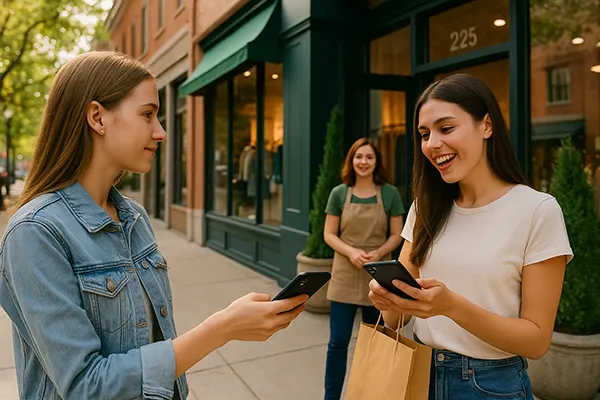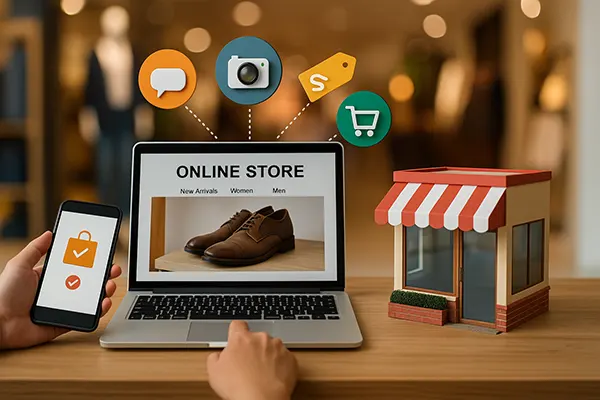
How to Boost Conversion on Mobile Traffic: 10 Psychological Triggers in 2025
In the ever-evolving digital landscape, mobile traffic has become the driving force behind successful online conversions. As more users access websites and services through their mobile devices, understanding the psychological triggers that influence their decisions becomes crucial for businesses. In 2025, staying ahead of the curve means tapping into the psychology of mobile users to drive conversions. This article explores 10 psychological triggers that can significantly enhance conversion rates on mobile platforms.
1. The Power of Social Proof
Social proof is a powerful psychological trigger that taps into the human need for validation from others. When people see that others are engaging with a service or product, they are more likely to follow suit. Mobile users, who often make decisions quickly, are heavily influenced by social proof in the form of reviews, ratings, and user-generated content. Websites that showcase positive reviews, testimonials, and user success stories can establish credibility and create a sense of trust. In 2025, integrating social proof features, such as real-time reviews and testimonials, can drive higher conversions.
One of the most effective ways to leverage social proof on mobile platforms is by using visual cues like ratings and star reviews. Consumers are more likely to purchase a product or sign up for a service if they see positive feedback from other users. For example, mobile apps with visible user ratings or testimonials on product pages create a sense of community and reliability. This can be particularly effective in e-commerce and service-based industries, where trust is crucial.
Additionally, integrating user-generated content such as photos, videos, and social media posts further enhances the impact of social proof. Seeing real people use and recommend products or services is a compelling trigger that resonates with potential customers. In 2025, businesses should invest in strategies that encourage customers to share their experiences online, as it strengthens the authenticity of the brand and increases conversions.
Why Social Proof is Crucial in 2025
The psychological need to belong and follow the actions of others is more prominent than ever in 2025. As mobile users are constantly on the go and have limited time to make decisions, they often look for external validation before committing to a purchase. Social proof addresses this need by providing the assurance that others have made similar decisions and had positive experiences. The more visible and accessible social proof is, the more likely mobile users are to convert.
In addition to traditional reviews, social media integrations allow brands to connect with potential customers through authentic user experiences. Highlighting user-generated content on social media platforms can also lead to increased brand visibility, which, in turn, drives higher conversion rates. The effectiveness of social proof, however, lies in its authenticity. Users can easily spot fake reviews or manipulated content, so it is important for brands to focus on generating genuine customer feedback.
To effectively implement social proof in 2025, businesses must adopt a multi-channel approach. By using social proof across different platforms, including websites, mobile apps, and social media, they can create a consistent and reliable brand presence that resonates with mobile users. This holistic approach is essential for businesses looking to increase conversion rates in the mobile-first era.
2. The Scarcity Principle
Scarcity is a psychological trigger that leverages the fear of missing out (FOMO) to drive consumer behaviour. This principle works on the premise that people place a higher value on things that are perceived as scarce or in limited supply. In the context of mobile conversions, creating a sense of urgency can encourage users to take immediate action. In 2025, this trigger remains as potent as ever, especially when applied to mobile e-commerce, subscriptions, and services.
Mobile users, who are often looking for quick solutions, are more likely to convert when they perceive a sense of urgency. Limited-time offers, countdown timers, or showing the number of items left in stock can push users to act fast before they miss out. By highlighting time-sensitive deals or limited availability, businesses can create a sense of urgency that prompts immediate action from users.
Additionally, mobile apps that use push notifications to alert users about limited-time sales or exclusive offers can enhance the impact of scarcity. When users receive notifications about deals that are about to expire, they are more likely to complete a purchase. Scarcity taps into the basic human instinct to secure something before it’s gone, making it a highly effective trigger for increasing conversions on mobile platforms in 2025.
Maximising Scarcity in 2025
As the digital world becomes more competitive, businesses must find creative ways to incorporate scarcity into their mobile strategies. In 2025, leveraging artificial intelligence to personalise scarcity messaging can make a significant impact. For example, showing a countdown timer that adjusts based on the user’s previous browsing history or purchasing behaviour can make the offer feel more tailored and relevant.
Furthermore, scarcity is most effective when paired with another psychological trigger, such as social proof. If a product is shown to be in limited supply and has received high ratings or many reviews, the combination of these triggers increases the perceived value of the product. This dual approach can be particularly effective in driving conversions during high-traffic periods, such as seasonal sales or product launches.
Scarcity also works well in mobile apps that offer subscriptions or memberships. When users are notified that they are close to missing out on a special rate or limited-time offer, they are more likely to convert. In 2025, businesses must refine their scarcity strategies by integrating AI and machine learning to provide personalised and timely scarcity messages that resonate with individual users.

3. The Reciprocity Principle
The principle of reciprocity is rooted in the human tendency to return favours. When a brand offers something valuable to a user for free, such as a discount, free trial, or valuable content, users feel inclined to return the favour by making a purchase or taking a desired action. In mobile marketing, the reciprocity principle can be an incredibly effective trigger for driving conversions.
One of the most common ways to use reciprocity in mobile marketing is through offering free trials or discounts in exchange for user information. Mobile apps that offer users a free trial or an exclusive discount for signing up create a sense of indebtedness that encourages users to follow through with a purchase. Additionally, offering value in the form of useful content or features can increase engagement and conversions.
Reciprocity also works well in loyalty programmes, where users are rewarded for their continued engagement with the brand. By offering exclusive deals or bonuses for repeat purchases, businesses can create a sense of mutual benefit that fosters long-term loyalty. In 2025, leveraging reciprocity through personalised offers and exclusive content is an effective way to increase conversions on mobile platforms.
Building Trust with Reciprocity in 2025
In 2025, building trust through reciprocity involves offering value in a way that resonates with mobile users’ preferences. Personalised offers that cater to individual needs, such as special discounts based on previous purchases, enhance the impact of reciprocity. Mobile users are more likely to return the favour when they feel the offer is tailored to their preferences and provides genuine value.
Furthermore, reciprocity can be enhanced through ongoing engagement with users. Mobile apps that provide users with regular updates, special deals, and rewards for continued engagement build a relationship of mutual respect and trust. This approach encourages users to not only convert but also stay loyal to the brand over time.
To successfully leverage reciprocity in 2025, businesses must focus on creating personalised experiences that offer real value to users. By offering free content, discounts, or trials in exchange for user information, businesses can foster a sense of goodwill that leads to increased conversions and customer loyalty.




